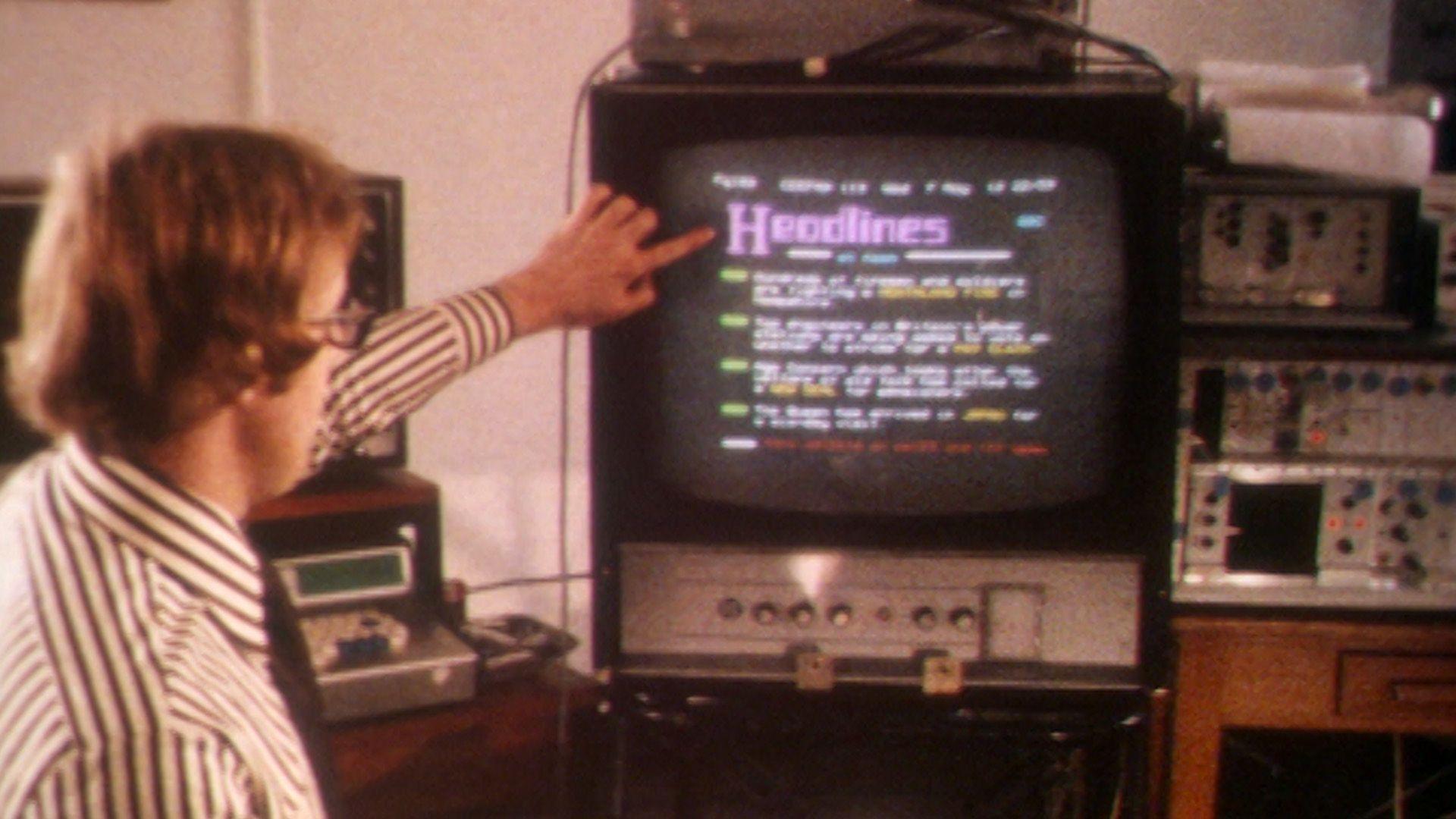Ceefax and the birth of interactive TV

Ceefax was on air for almost 40 years
- Published
Ceefax was the world's first teletext service, going live on 23 September 1974. In a pre-internet world, the revolutionary system allowed people to check the latest ΒιΆΉΤΌΕΔ news and sport updates at the touch of a few buttons.
By the 1990s, as many as 22 million people were using the platform weekly, letting people βsee factsβ through their television screens.
The popular service only came about because of an accidental discovery in the ΒιΆΉΤΌΕΔ engineering department in the late 1960s.
ΒιΆΉΤΌΕΔ engineers Geoff Larkby and Barry Pyatt were investigating ways to transmit subtitles for deaf and hearing impaired viewers. In the course of their work, they came across the βspareβ lines at the top of the 625-line television signal. They believed that this space could be used to transmit words or numbers.
"This is Ceefax": The worldβs first teletext service went live in 1974
ΒιΆΉΤΌΕΔ Director of Engineering James Redmond was enthusiastic about the possible opportunities this presented for conveying information. And he was right. Once it was developed, Ceefax meant text could be displayed instead of the television picture, or overlayed on it, and accessed at the touch of a button.
Ceefax displayed blocky text in seven different colours using 32 characters on 24-line pages. To access these pages, viewers typed the three-digit page number required into their TV remote control and waited a few seconds for information to appear on the screen.
This facility would allow ΒιΆΉΤΌΕΔ viewers to check news headlines, sport scores, weather forecasts and TV listings on screens without having to wait for the next TV or radio bulletin. In a pre-internet era, this was the beginning of the interactive television services that we now take for granted.
In the beginning, within a specially-built newsroom on the seventh floor of the ΒιΆΉΤΌΕΔ Television Centre in Shepherd's Bush, an editorial unit took shape under the guidance of long-serving ΒιΆΉΤΌΕΔ journalist, Colin McIntyre.
Founding editor of the ΒιΆΉΤΌΕΔ's Ceefax teletext service Colin McIntyre, pictured with a television set showing Ceefax, 15th November 1978.
During the testing phase McIntyre had worked alone, writing every page himself before feeding the punch tape into machines to be encoded. In the years that followed, he enlisted a team of eight to help him carry out the work. This included four sub-editors and four research assistants who worked together in a small room at the Television Centre.
Although Ceefax was a new form of journalism, it took its base from the written word. The team of journalists would monitor incoming wire copy from news agencies and when a story needed to be updated, they would work at a production terminal on a visual display unit. This consisted of a television monitor linked electronically to a typewriter keyboard and a computer.
An introduction to the ΒιΆΉΤΌΕΔ's new teletext information service, 1975
When Ceefax was launched, the UK was the only country in the world where televisions could receive teletext information.
It initially lacked mass appeal, as new televisions had to be equipped with the correct decoder to receive it. However, the popularity of rented televisions meant that uptake steadily increased.
Ceefax became familiar even to people who didnβt have one of these newer televisions, as gaps in the broadcast schedule began to be filled with a rotating selection of its pages, accompanied by some background music. As many as 600 pages would eventually be available, from the latest pop charts to football transfer gossip.
The ΒιΆΉΤΌΕΔ's Ceefax service is displayed on a television unit, 1975
At its peak, millions of users checked Ceefax at least once a week. The service continued to be popular even amid the growth of ΒιΆΉΤΌΕΔ websites, but it came to an end when digital television was introduced as it relied on analogue signals to be broadcast.
In 2012, Ceefax completed its final broadcast after 38 years on air. What started as an accident, evolved into one of the most well-respected sources of news and sports results in the country.
Ceefax closes after 38 years, 2012.
- Published10 June
- Published22 May
- Published13 June